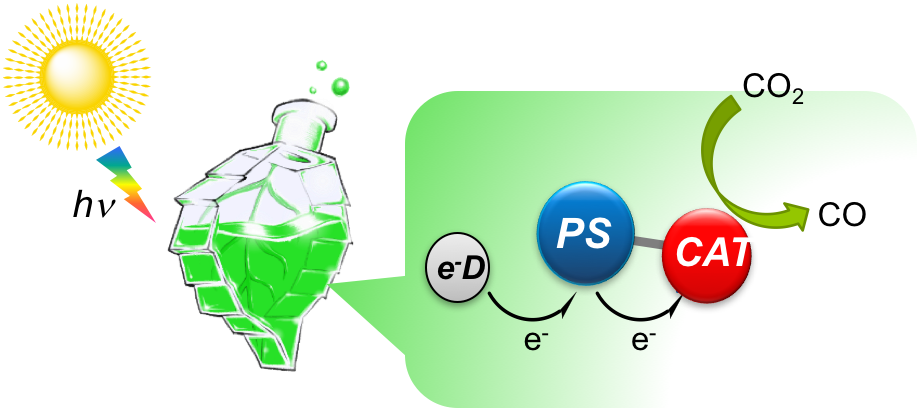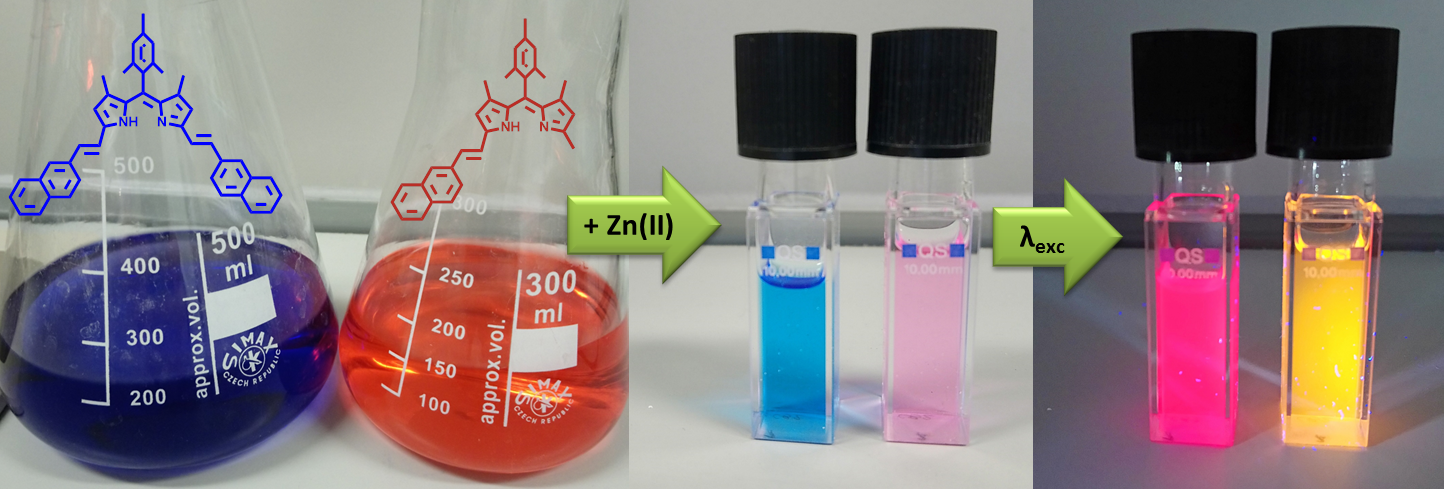Research
Our research interests focus on photoactive organometallic complexes. In particular, we develop new earth-abundant metal complexes, starting from the organic synthesis of new ligands to the photophysical and electrochemical characterization of the final organometallic complexes.

Project 1) Artificial photosynthesis.
Solar chemical generation is a philosopher´s stone of many researchers nowadays. Important milestones have been recently achieved on artificial photosynthesis, nevertheless investigation of efficient and robust photosensitizers has to be still pursued.[1] In terms of applicability, these photosensitizers should be easily available and cost-effective. [2]
An effective photosensitizer should possess:

[1] (a) Armaroli, N.; Balzani,V.; Chem. Eur. J., 2016, 22, 32-57 ; (b) Berardi, S.; Drouet, S.; Francàs, L.; Gimbert-Surinach, C.; Guttentag, M.; Richmond, C.; Stoll, T.; Llobet, L.; Chem. Soc. Rev. 2014, 43, 7501-7519. [2] (a) Heberle, M.; Tschierlei, S.; Rockstroh, N.; Ringenberg, M.; Frey, W.; Junge, H.; Beller, M.; Lochbrunner, S.; Karnahl, M.; Chem Eur. J. 2017, 23, 312–319; (b) C. Bizzarri,* A. P. Arndt, S. Kohaut, K. Fink, M. Nieger, J. Organomet. Chem. 2018, 871, 140.
Project 2) Light-harvesting antennae.
Reminescent of natural light-harvesting complexes, porphyrins are also used in artificial light-harvesting systems. Our work focuses on similar systems such as dipyrromethenes, because of the wider scope of the functionalization of such ligands compared to porphyrins. Highly-fluorescent dyes based on bis(dipyrrinato) Zn(II) complexes have been prepared, aiming at minimizing the non-radiative energy losses (high quantum yield), while the efficiency of light absorption of the visible spectrum increases.[3]

[3] D. Tungulin, J. Leier, A.B. Carter, A. K. Powell, R. Q. Albuquerque, A.-N. Unterreiner, C.Bizzarri,* Chem. Eur. J. 2019, DOI:10.1002/chem.201806330
Project 3) Far-red and near-infrared emitters
In bio-imaging, far-red and near infrared (NIR) emitting dyes have many advantages, such as their minimum phototoxicity, excitation wavelength far from the biological optical window, deep tissue penetration and minimal background fluorescence by biomolecular species.[4] Among the first-row transition metal complexes, luminescent zinc complexes emerged as promising fluorescent labels or sensors, becoming powerful tools to detect molecular events or bioanalytes in biological processes. We have been developing high luminescent NIR emitters based on bis(dipyrrinato) Zn(II) complexes, that can be used in imaging in living cells, in the framework of the research training group GRK 2039 http://www.grk2039.kit.edu/index.php (Project A4)

Our research is supported by:
Deutsche Forschung Gemeinschaft ![]()
SFB/TRR 88 3MET 
Klaus Tschira Stiftung 
Eucor, The European Campus 
